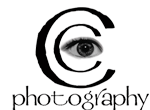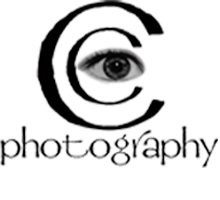What are Direct Expenses in Costing?
May 20, 2022
Bookkeeping
For example, if the cost of renting an office space is $5,000, the amount charged remains constant whether 100 or 1,000 products are sold. The spending by a company directly tied to producing its product offerings are collectively defined as “direct” costs. However, if expenses are cut too much it could also have a detrimental effect. For example, paying less on advertising reduces costs but also lowers the company’s visibility and ability to reach out to potential customers.
Examples of indirect expenses include facility rent, facility insurance, salaried compensation, secretarial wages, depreciation and amortization, and research and development. Indirect Expenses covers all those expenses which are not included in direct material, direct wages and direct expenses. Basically, these are the costs which benefit the entire firm as a whole and not just one department or segment of the business.
Although direct and variable costs are tied to the production of goods and services, they can have some distinct differences. Variable costs can fall under the category of direct costs, but direct costs don’t necessarily need to be variable. reporting in xero Using direct costs requires strict management of inventory valuation when inventory is purchased at different dollar amounts. For example, the cost of an essential component of an item being manufactured may change over time.
How to Set Prices Based on Direct and Indirect Costs
Direct business expenses may qualify for deductions, helping you reduce the amount of taxes you have to pay for operating and profiting from your business. Sure, you can look at your cost of goods sold to see how much it costs to produce a good. The income statement lists a company’s revenue and expenses during a specific period. Direct Costs can be traced back to its specific product offerings, whereas Indirect Costs cannot as these types of costs are not directly tied to production.
- Our work has been directly cited by organizations including Entrepreneur, Business Insider, Investopedia, Forbes, CNBC, and many others.
- Examples of expenses include rent, utilities, wages, salaries, maintenance, depreciation, insurance, and the cost of goods sold.
- These costs affect the products manufactured during the period the costs occurred.
- However, if the expenses are related to office and administration, they are allocated only when it is corporate overhead.
- Sakshi Udavant covers small business finance, entrepreneurship, and startup topics for The Balance.
Examples of expenses include routine expenses such as purchases, salaries, commissions, and utility bills. To run a business successfully, you need to be able to keep a proper and correct financial history. That’s why it’s important to understand the difference between indirect and direct exposure. With the ABC system, you can allocate your overhead costs to certain activities, and thus products, to get a more specific picture of your cost by product. To find out how much it truly costs you to produce a product or perform a service, you might also consider an activity-based costing (ABC) system.
Difference Between Direct and Indirect Expenses
Business expenses like rent and employee wages are just some of the deductions you can claim. But to do so, you need to have accurate and detailed records to back up your claims. To create the toys, the employee needs wood, which is considered a direct material. And, the employee must use wood glue, which is a manufacturing supply.
What is a Direct Expense?
However, the cost of electricity is a variable cost since electricity usage increases with the number of products that are produced or manufactured. Direct costs and variable costs are similar in nature and are both types of costs involved in production. Direct costs are expenses that can be directly traced to a product, while variable costs vary with the level of production output. Direct and indirect costs are the major costs involved in the production of a good or service.
Certain areas of direct expenses will affect the price of products without a doubt. You may find that when fuel surcharges increase, so do the prices. Direct expenses that need to be considered in any business are very much the same throughout. The cost of materials, freight, and import duties are a few of these. In short, a direct expense is an expense that is related to the purchase of products. Many companies are in the trade for resale, and they have to buy inventory to operate.
“The total of all your sales must cover direct and indirect costs for your company to make a profit. That means some products must be priced above their direct costs to cover indirect costs,” Rob Stephens, a financial consultant advising small businesses, told The Balance via email. The direct expenses required to manufacture a product or offer a service can be categorized as direct costs. The overhead expenses that aren’t directly related to the product being manufactured but remain necessary to keep the business running are categorized as indirect costs. There are many more types of expenses that are not direct expenses – they are called indirect expenses, because they do not vary with changes in the volume of a cost object.
Definition of Direct Expenses
At the end of the day, the cost inflates the price of the product at the time of sale. Examples of factory overhead expenses may include things like factory utilities and equipment. In many instances, indirect expenses are not allocated to any area in particular. In real-world accounting practice, there are very few items that are classified as direct expenses. Generally, the heading Direct Expenses is ignored in the preparation of accounting statements. For purposes of forecasting, indirect costs like insurance, rent, and employee compensation tend to be more predictable compared to direct costs.
However, variable costs do not need to be directly related to the product. Indirect costs, on the other hand, tend to be fixed costs, so the expense amount is independent of the production volume. For example, if a business owner schedules a carpet cleaner to clean the carpets in the office, a company using the cash basis records the expense when it pays the invoice. Under the accrual method, the business accountant would record the carpet cleaning expense when the company receives the service. Expenses are generally recorded on an accrual basis, ensuring that they match up with the revenues reported in accounting periods.
An expense is a cost that businesses incur in running their operations. Expenses include wages, salaries, maintenance, rent, and depreciation. Businesses are allowed to deduct certain expenses from taxes to help alleviate the tax burden and bulk up profits. This will especially stand you in good stead when the need to reduce production costs arises. Indirect materials and labor such as tools make production possible, but they cannot be allocated to one product in particular. The costs of these materials are variable as they will change according to the workload.
If you’re having a hard time assigning an expense to a
specific product, service, customer, or project, it’s probably because it is an
indirect expense. Although they’re not related to a particular product or
service, it’s often necessary to incur indirect costs to ensure your business runs
smoothly. If you want to build a profitable business, it’s important to consider both direct and indirect costs while defining your pricing strategy.
Difference between direct & indirect expenses
The prices your competitors charge must also factor in when you develop your pricing strategy so you aren’t under- or overcharging customers. Hiscock also recommended adding a “buffer” of 10% to 15% in case something goes wrong. “This will ensure you are protecting yourself and making a profit off of every single job that you do,” he told The Balance by email.





